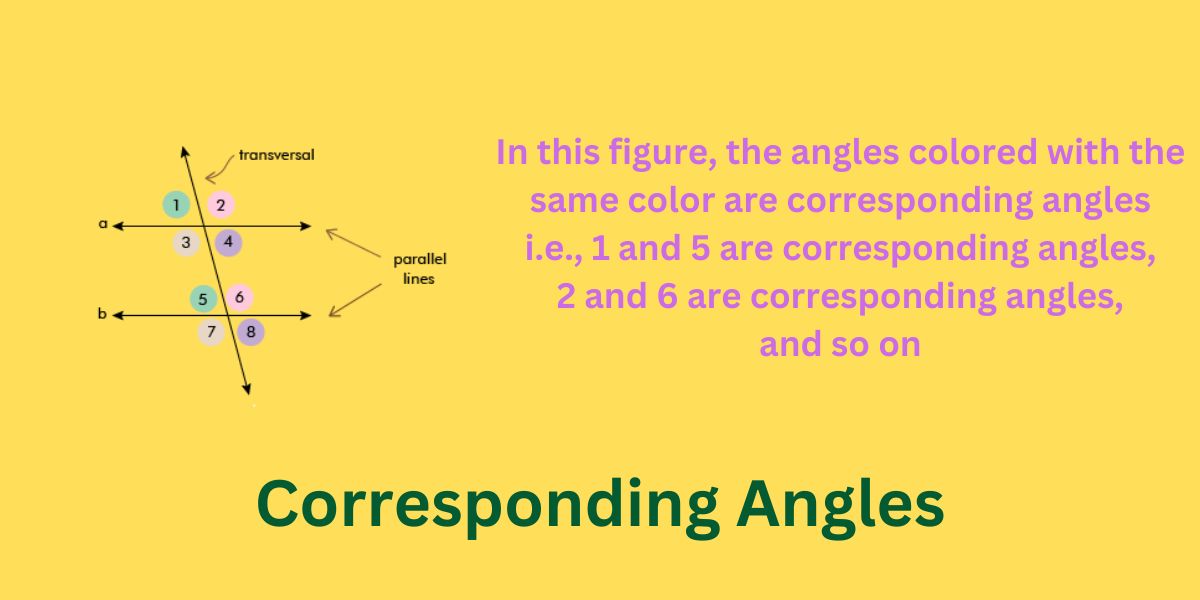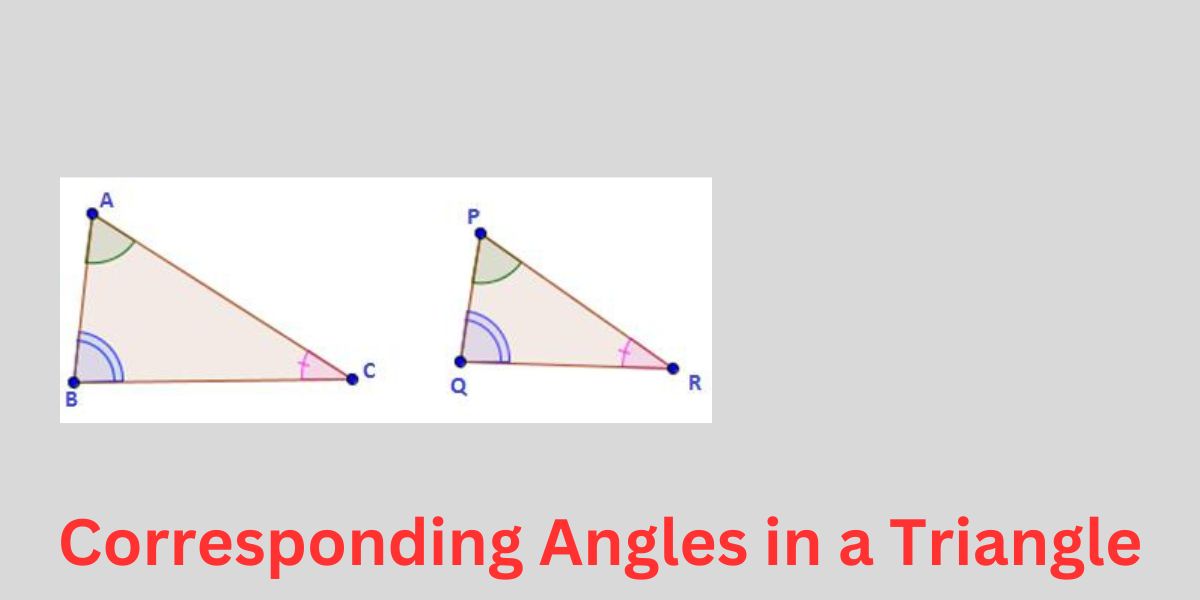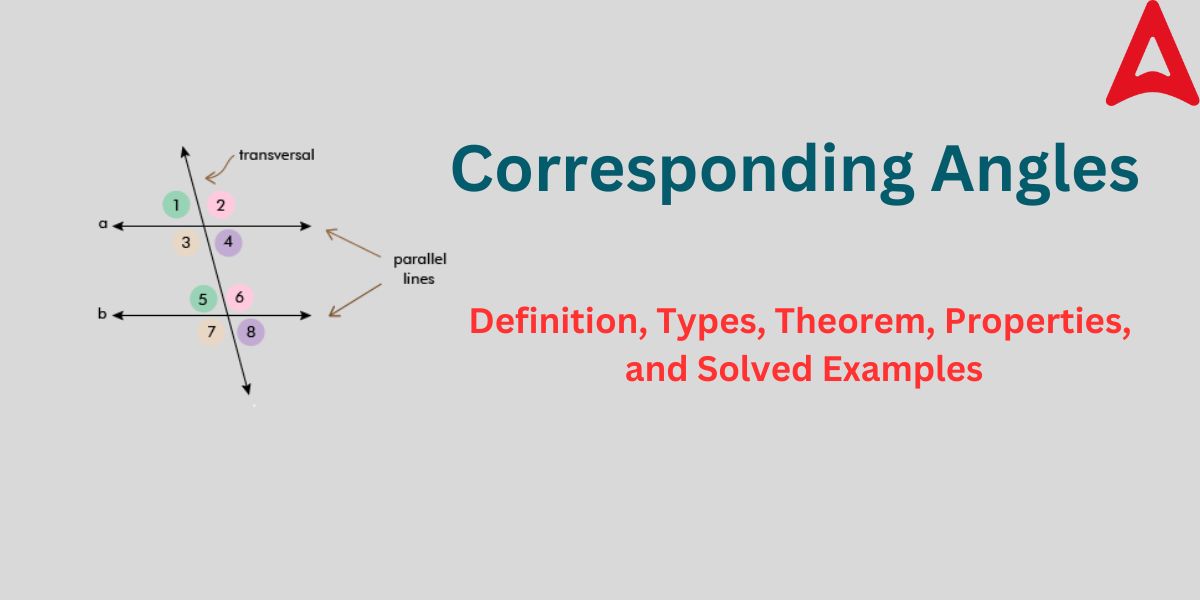Corresponding angles are one of the crucial topics in geometry. It is primarily related to traversal lines and congruency. These angles are always congruent. You must have definitely heard the names of these angles in your high school mathematics. The concept of this special angle spans across each and every geometrical shape. So it is of utmost importance to understand the concept behind this crucial topic. This article will guide you through every small concept that you should know in order to master this domain of special angles.
Corresponding Angles
As the name suggests, corresponding angles are those angles that is present in the corresponding or matching corners of the traversal. When two parallel lines are intersected by the transversal, these angles are created. Traversal are those lines which intersect the parallel lines. Along with these angles, other types of angles like vertically opposite angles and alternate angles are also created by this traversal. The concept of corresponding angle plays a huge role in solving many complex geometrical problems. Let us now understand this special type of angle in a detailed manner though its definition and an example.
Corresponding Angles Definition
Corresponding angles are pairs of angles that are in the same relative position at the junction of two lines and a transversal. Imagine a transversal (a line that intersects two or more other lines) passing through the intersection of two parallel lines to help you better grasp this. These special angles are those that are located in matching places, either on the same side of the transversal or on corresponding sides of the parallel lines. The following figurative example will give you a crystal clear view of the above-stated facts.

Corresponding Angles Examples
As we know, those angles can be termed corresponding in nature that are present in the corresponding or relative positions of the traversal. From the above figure, we can tell the names of these special angle pairs. Those are:
∠ 5 and ∠ 1
∠ 6 and ∠ 2
∠ 3 and ∠ 7
∠ 4 and ∠ 8
Corresponding Angles Types
These angles are classified into two types based on the nature of the two lines whom the traversal intersects. The two lines intersected by the traversal can either be parallel or non- parallel. Parallel lines are those lines which always remain equidistant from each other. Based on this, the two types are:
- Corresponding angles created by a traversal and two parallel lines
- Corresponding angles created by a traversal and two non-parallel lines
It should be kept in mind that the these angles created by a traversal and two non-parallel lines are not too much related in property. They are just corresponding due to their relative position. So most of the times, we study about the the other type, i.e., angles created by a traversal and two parallel lines.
Corresponding Angles in a Triangle
In a triangle, the concept of these angles is related with congruency of triangles. These angles are present in triangles only if they are congruent. In a congruent triangle, two angles are said to be corresponding in nature if they are equal in measure. In other words, the angle formed by two pairs of congruent sides of congruent triangles are known as corresponding angles in a triangle. Let us clearly explore this concept through a diagram.

In the above figure, ΔABC is congruent to ΔPQR
Hence, the corresponding pairs of angle are:
∠A = ∠P
∠B = ∠Q
∠C = ∠R
Corresponding Angles Property
These angles show many different properties which help them identify from rest of the angles. These important properties of these special angles will prove to be beneficial for solving problems.
- They always occur in pairs
- These angles are formed by parallel lines and a traversal are always congruent or equal in measure
- These angles created by traversal and non-parallel lines are not congruent
- They are situated on the same side of the traversal
- They are also present in congruent triangles
- The congruent triangles’ corresponding angles are equal in measure
Corresponding Angles Theorem
The theorem for this special angle states that “If a line intersects two parallel lines, then the corresponding angles are congruent (equal)”. It is also sometime referred to as the “corresponding angles postulate”. The converse of the theorem also hold true. That is, if angles that are corresponding in position are congruent (equal in measure), then the two lines must be parallel.
Corresponding Angle Solved Examples
Below we have mentioned some solved examples of these angles, so that students can get a better understanding about how to solve the problems related to these special angles.
Example 1: Given that angle A and angle B are corresponding in nature. If the value of angle A is 70°, then what will be the value of angle B?
Solution: As we know that angles that are corresponding are congruent in nature
Hence, angle A = angle B
Therefore, ∠B= 70°
So the value of angle B will also be 70°.
Example 2: You are given two angles: ∠A and ∠B. These angles are located at corresponding positions. The values ∠A and ∠B are 6y + 3 and 2y – 5 respectively. What will be the value of y?
Solution: Here we are given two angles A and B that are corresponding in nature
By using the property of corresponding angles, we can say that
∠A = ∠B
So, 6y + 3 = 2y -5
=> 6y -2y = -5 -3
=> 4y = -8
=> y = -8/4
=> y = -2
Hence, the value of y will be 2.
Example 3: There are two congruent triangles ΔPQR and ΔXYZ. We are given the measurements of two angles of ΔPQR, which are ∠P = 70° and ∠Q= 30°. Find out the value of ∠Z.
Solution: We have been given,
∠P = 70°
∠Q = 30°
As
ΔPQR ≅ ΔXYZ
Hence the angles at corresponding positions of both these triangles will be equal
So, ∠P = ∠X = 70°
∠Q = ∠Y = 30°
By applying the angle sum rule of a triangle here,
∠X + ∠Y + ∠Z = 180°
70° + 30° + ∠Z = 180°
100° + ∠Z = 180°
∠Z = 180° – 100°
∠Z = 80°
Example 4: The values of two angles that are corresponding in nature are given to be 5P – 10 and 60. What will be the value of P?
Solution: Given, 5P – 10 and 60 are corresponding in nature, so the measure of their angles will be equal
i.e., 5P – 10 = 60
=> 5P = 60 + 10
=> 5P = 70
=> P = 70/5
P = 14












 Greater Than and Less Than, Equal to Sig...
Greater Than and Less Than, Equal to Sig...
 XXV Number- XXV Roman Numerals Definitio...
XXV Number- XXV Roman Numerals Definitio...
 Ordinal Numbers: Meaning, Examples, Appl...
Ordinal Numbers: Meaning, Examples, Appl...














